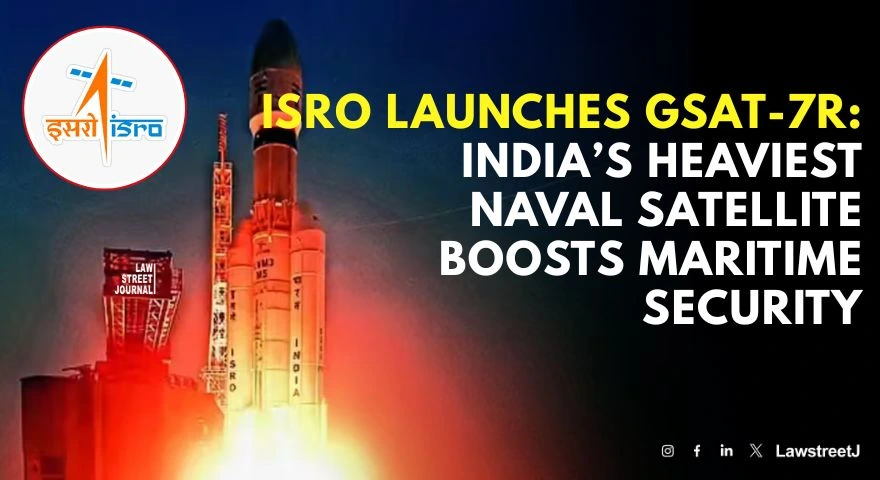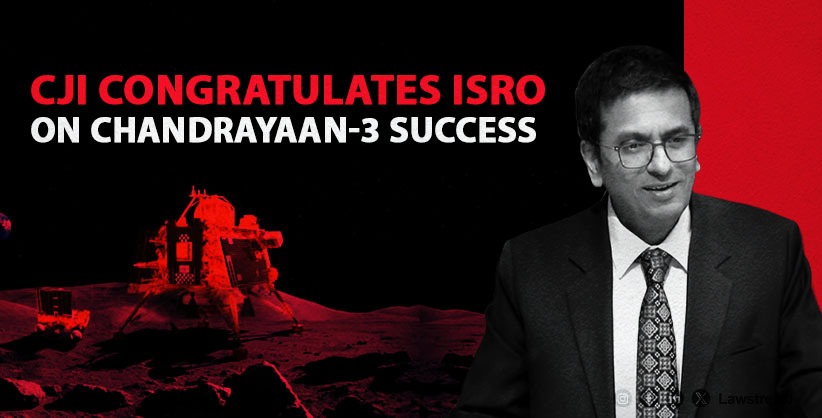New Delhi: The Indian Space Research Organisation (ISRO) successfully launched the GSAT-7R communication satellite on November 2, 2025, aboard its LVM3-M5 launch vehicle from the Satish Dhawan Space Centre in Sriharikota, Andhra Pradesh. The mission marks a major advancement in India’s efforts to enhance maritime security through space-based communication systems.
GSAT-7R, also known as CMS-03, is the heaviest communication satellite ever launched from India, weighing 4,410 kilograms. It is part of the GSAT-7 series, which includes GSAT-7 (Rukmini) and GSAT-7A serving the Indian Navy and Air Force respectively. The satellite has been designed to improve secure, real-time communication across the Indian Ocean Region (IOR), supporting ship-to-ship, ship-to-shore, and fleet-wide coordination.
Equipped with UHF, S-band, and C-band transponders, GSAT-7R enables encrypted high-throughput data transmission. Its coverage extends across strategic waterways, including the Strait of Malacca, Gulf of Aden, and Persian Gulf—providing continuous and reliable connectivity for naval units and command centres.
According to ISRO officials, GSAT-7R will strengthen maritime domain awareness, communication redundancy, and real-time data-sharing capability across naval assets. The mission aligns with the Defence Space Strategy 2023, which emphasises integrating space-based systems into national security operations. The satellite will support surveillance, anti-submarine operations, fleet coordination, and future unmanned maritime platforms.
Indigenous Development & International Compliance
GSAT-7R was developed by ISRO under the Department of Space, Government of India, following frameworks guided by the draft Space Activities Bill (2017) and the Defence Acquisition Procedure (DAP) 2020. LVM3-M5, also known as “Bahubali,” is India’s most powerful operational launch vehicle—a three-stage rocket capable of placing over four tonnes into geostationary transfer orbit (GTO). This mission marks its fifth operational flight.
The mission complies with international space treaties, including the Outer Space Treaty (1967) and the UN Registration Convention (1976). The satellite has been registered with the United Nations Office for Outer Space Affairs (UNOOSA) in accordance with transparency and orbital object management norms.
Frequency coordination and orbital approvals were secured through the International Telecommunication Union (ITU), Geneva. ISRO confirmed that all communication bands meet ITU regulatory standards.
The satellite is fully indigenous, designed and manufactured domestically using locally sourced subsystems and materials, reinforcing India’s self-reliance under the Atmanirbhar Bharat initiative.
Dual-Use Capability & Gaganyaan Support
GSAT-7R is also configured for civilian and scientific mission support. It will act as a relay node for telemetry, tracking, and command (TT&C) during the Gaganyaan human spaceflight mission scheduled for 2026, enhancing mission safety and communication redundancy.
In addition to serving the Navy, GSAT-7R will interface with INSAT and NavIC systems, enabling cross-platform interoperability and enhanced national situational awareness.
Strategic Significance
The successful deployment of GSAT-7R significantly enhances India’s space-based defense communication infrastructure. It will ensure secure and uninterrupted communication across maritime theaters and strengthens India’s compliance with international transparency and space governance standards.
By deploying this satellite through an indigenous heavy-lift launcher, India has demonstrated significant progress in advanced satellite and launch-vehicle technology, reinforcing its position as a global space power.









